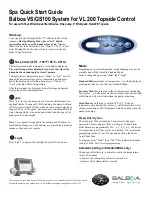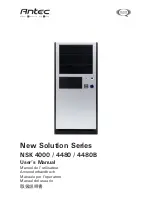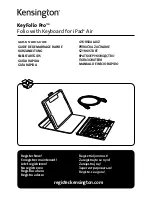
29 |
A GH 5 I N S T R UC T I O N M A N UA L
Wipe the matching sealing surface part of the housing with a clean lint-free cloth.
Lubricate the O-ring with a thin layer of Aquatica O-ring lubricant (# 19213) until it
appears to be smooth and shiny.
Do not over lubricate
. Use just enough lubricant
so the O-ring will pull smoothly through your fingers. Excessive amounts of grease
will only attract and trap dirt onto the O-ring.
Confirm that the Port and extension ring O-rings are properly and evenly seated in
their O-ring groove.
To reinstall the clean and lubricated main O-ring of the housing:
Place the entire O-ring over the groove and start by pushing the O-ring in
at each corner.
Push the O-ring at each side to distribute it evenly across the surface
before finally working in the rest of the O-ring.
Never start at one end and work your way around the O-ring. This creates
uneven tension on the O-ring which may cause the O-ring to stretch.
WARNING:
When changing ports or O-rings, a simple seal test without the camera inside
should be performed. Strapping a weight to the housing and lowering the unit to a
depth of 30 to 50 feet of water for at least 10 minutes will assure you that you
have a proper seat of the new port or O-ring. This test,
though time consuming
and often considered unnecessary, may save your camera equipment from
irreparable water damage.
The internal O-rings of the housing are not user replaceable. While these O-rings are not as
susceptible to damage as the main seal, rinsing the housing properly with fresh water to flush
out salt crystals and sand residues will assure trouble free operation. Aquatica recommends
yearly maintenance of the internal O-rings. Authorized service centers are offering this
service with factory-approved procedures and replacement parts. You can check the closest
service center to you on the Aquatica website.
WARNING:
Only use the Aquatica O-ring lubricant (#19213). Petroleum-based lubricants,
used by some manufacturers to lubricate their Silicone-made O-rings will cause
the O-ring material to swell. This will cause difficult installation and will likely
result in O-ring being damaged or pinched.



































